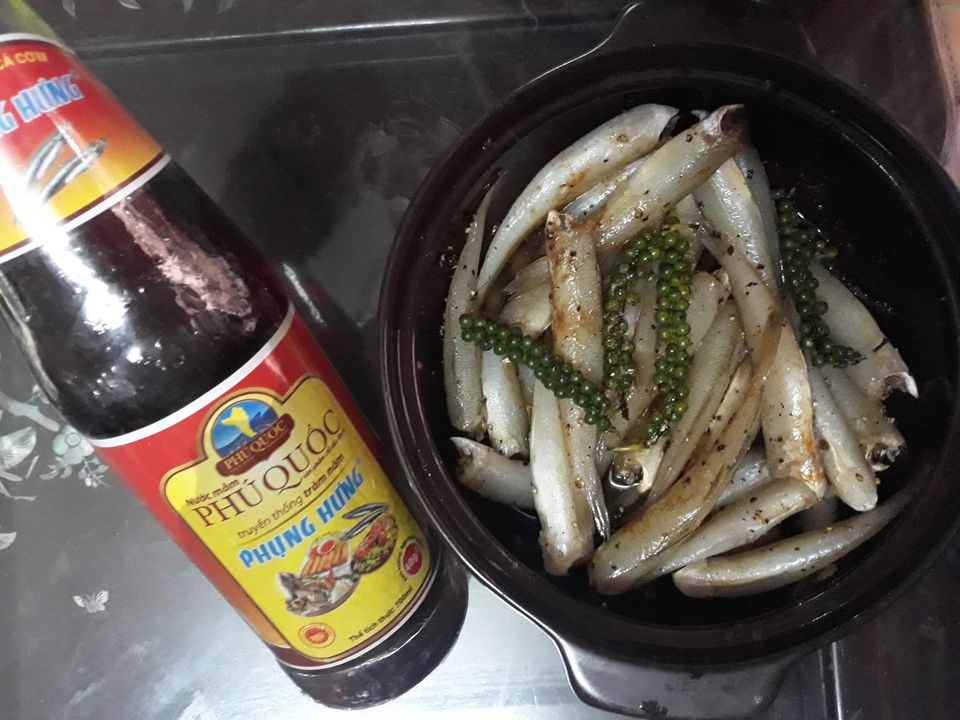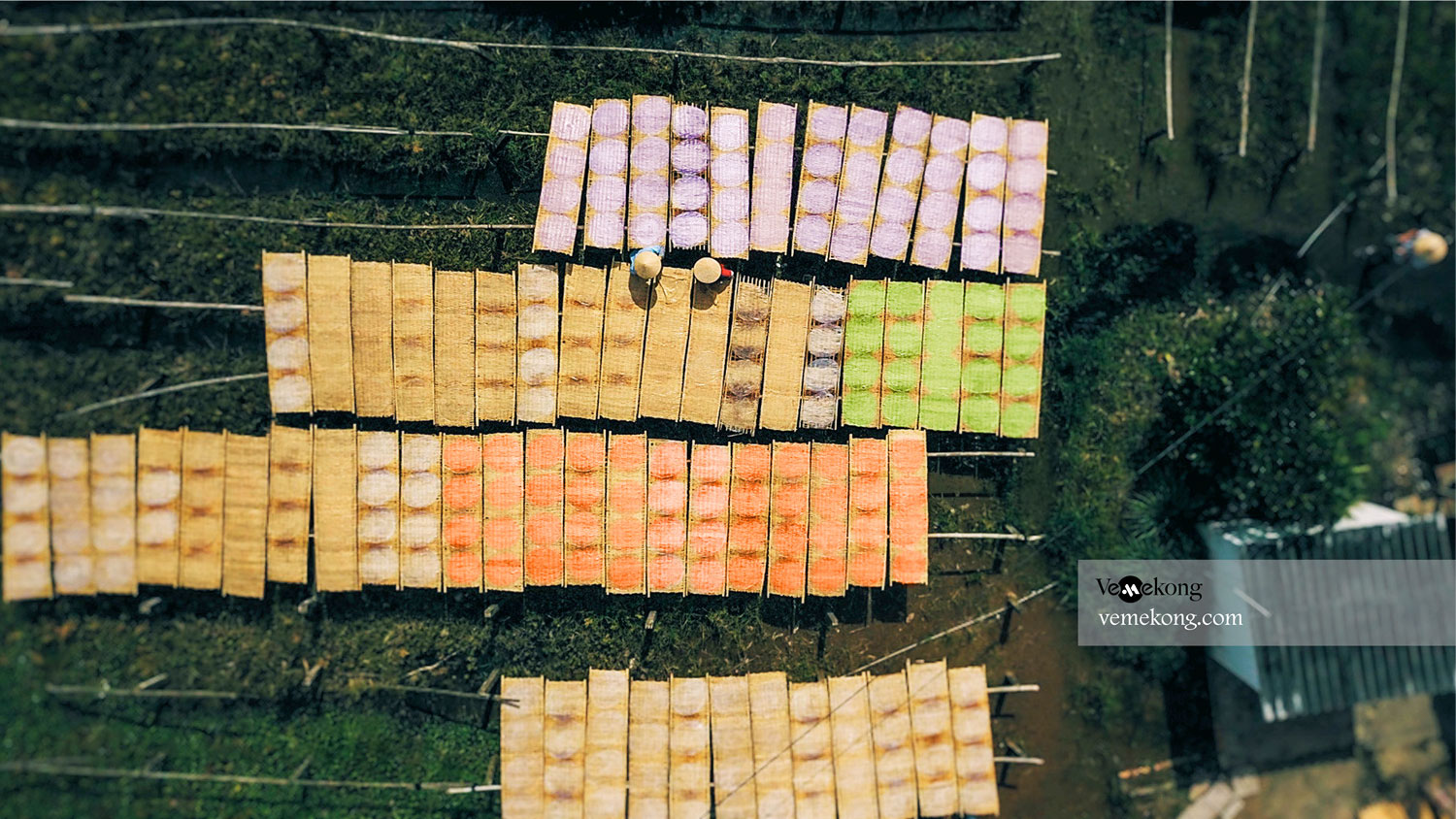Phu Quoc fish sauce is the common name for fish sauces produced in Phu Quoc, a large island in the southwest of Vietnam, in Kien Giang province. It is one of the famous fish sauce not only in Vietnam but also known in many countries around the world.
By Thomas Vietnam at vemekong.com | Official Phu Quoc Visitor Guide
1. Better to Know as a Food Lover
Find them: Phu Quoc Island.
Best time: Dusk-Dawn
Don’t miss: Phu Quoc fish sauce
Local’s pick: Thanh Phuong Shop
Tourist’s pick: Thanh Quoc fish sauce shop
Blog: https://vemekong.com/phu-quoc-fish-sauce/
Facts: Since 2001, the Department of Industrial Property has recognized the appellation of origin of Phu Quoc fish sauce and in 2005, the Ministry of Fisheries issued a provisional regulation on the production of fish sauce with the name of origin of Phu Quoc, in which Compulsory after 3 years, only fish sauce bottled in Phu Quoc according to TCN230:2006 can be certified of origin from Phu Quoc.
2. Better to Know Phu Quoc fish sauce
The sea around Phu Quoc island has a lot of seaweed and plankton as food for anchovies, so there are huge resources for anchovies. The use of this resource to make fish sauce in Phu Quoc has a history of over 200 years. At the end of the 19th century, people on Phu Quoc island sold fish sauce to Cambodia and Thailand. However, Phu Quoc fish sauce was only famous from the 1950s, reaching its peak in the years 1965-1975. During the subsidy period in the period 1975-1986, this industry gradually lost its market share, many barrel houses closed and changed jobs. However, since the economy gradually switched to a market mechanism, the fish sauce making industry in Phu Quoc gradually recovered. Up to now, Phu Quoc fish sauce has reached 8 million liters/year.
Before 1945, in Phu Quoc, there were nearly 100 fish sauce barrel houses, mainly concentrated in Duong Dong and Cua Can. During the war, the barrel houses in Cua Can were destroyed, so the barrel houses gradually moved to Duong Dong and An Thoi as they are today.
3. Phu Quoc fish sauce in Kien Giang
Any type of fish can be used to make fish sauce, but Phu Quoc fish sauce producers only use anchovies as ingredients. Anchovies have about a dozen types, but only anchovies with pepper stripes, red anchovies and anchovies have the highest quality of fish sauce.
The difference of Phu Quoc fish sauce is that the anchovies are mixed fresh on board. The main fishing season of the year is from July to December. When the nets have just been pulled alongside, the fish will be picked up with a net, remove impurities and rinse with sea water, then immediately mix the island with salt and water. ratio of 3 fish to 1 salt and then taken to the ship’s tunnel. This way of mixing fresh fish keeps the fish meat from decomposing, the fish sauce has the highest protein content and does not have a bad smell.
The main difference of Phu Quoc fish sauce is the characteristic cockroach wing color, completely natural, not by mixing colors like other places. This color of cockroach wings is obtained by fresh marinating with blood in the fish body and aging time in wooden barrels for up to 12 months.
4. How to Make Phu Quoc fish sauce
Materials to prepare:
Anchovy
Pure salt
How to make anchovy fish sauce:
Step 1: Prepare anchovies
After buying anchovies, please wash them with water. Then, soak the fish in a basin of diluted salt water for 20 minutes, then take it out and let it drain.
Step 2: Choose jars and salt to brew fish
– The jar you should choose is made of ceramic material, not plastic jars. Rinse the jar with a layer of boiling water and then dry it to avoid flies and flies flying inside.
– Salt needs to be pure salt, free of impurities and has been stored for at least 1 year. The fact that salt is stored for a long time will cause Ca, K, and Mg ions – substances that cause acrid, bitter and hot taste to flow less, making the salt “sweet”.
Step 3: Incubate fish sauce
To brew delicious and delicious fish sauce, you need to ensure the brewing ratio is 3:1 (ie 3 fish, 1 salt). The mixture of salted fish will be called Chuong at this time. Do the following in turn: Sprinkle 1 layer of salt first on the bottom of the jar, then 3 layers of fish. Just keep doing this until you run out of fish. Then, you mix the fish and salt well. Finally, spread a final layer of salt on top, both to create compression and create an environment to squeeze all the air out.
Close the lid of the strange jar, use more tape to wrap it tightly around the lid, avoiding insects and bugs from crawling into the jar. Put the jars in a sunny, cool place to quickly ripen the jars. The fish sauce needs to be incubated for at least 6 months to be ripe and ready to eat. After 12 months, the fish sauce will gradually turn to the color of dark cockroach wings. Pour into a cup to see the fish sauce has a wavy color, looks extremely beautiful.
Step 4: Filter fish sauce
Prepare a bowl to store fish sauce. At the top of the brass is a basket with a small hole. Place 1 more towel inside the hole in the basket. Proceed to filter the fish sauce by slowly pouring the mixture onto the towel. Let the fish sauce drip down to the bottom of the bowl. You filter the fish sauce so that it flows as slowly as possible. The fish sauce will be clear and not spoiled by the fish carcass.
5. Pro tips:
Here are our tips for easing your mind (and stomach) around food-handling environments that you may not be used to.
Make sure the food is freshly cooked. If you’re eating hot street food, it’s always safest (not to mention more delicious) to eat food you can see being cooked to order.
Look for lines and busy stalls. Busy street food stalls are an indicator of popularity, and their high turnover rate means the food is never sitting out for hours and developing dreaded bacteria. Yes, long lines can be discouraging when you’re hungry after a full day of exploring, but it’s not worth the risk of grabbing precooked food from the empty spot next door.
Eat when the locals are eating. The last and most important element here is when to eat. You’re likely already on a weird eating schedule while you’re traveling, but it’s important to try and adjust to the eating times of where you are. A bowl of pho might be lunch for Americans, but it’s breakfast for the Vietnamese. This ensures that you’re eating freshly cooked food and that you can find the best and most popular places to eat.
If you can’t drink the water, then you can’t eat the salad. Most people get so hung up on not drinking the water or skipping ice in drinks that they don’t think about all of the other ways in which water is used in food service. Fruits and vegetables tend to be washed with tap water in most places, rather than the filtered water that locals drink—or sometimes it’s not washed at all. If you’re really craving some produce, try fruits you can peel or cooked veggies.
Trust your gut. If you’re unsure about the food or the way that it’s being prepared, then keep moving. Eating street food all over the world doesn’t make you an expert. Every stall and every country are different, and sometimes the rules can be harder to follow. When something doesn’t look, smell, or feel right, don’t eat it! Trust your judgment. Chances are that there’s another spot close by that’s making something more delicious.
Must-Eat Foods & Restaurants in Can Tho: Co Ut’s Cong cake, Ut Dzach Fine Rice Vermicelli, Thanh Van Grilled Pork Sausage, Crab Noodle Soup At Floating Market, Scorched Rice with Caramelized Fish Sauce, 7-Toi’s Duck Meat Pancake, Banh Mi Thuy, Banana Blossom Salad, Fried Spring Rolls, Fresh Spring Rolls, Fetal duck egg (balut), Honeycomb Cake, Mini Sticky Rice Cake, Cassava Silkworm Cake, Grilled Banana Wrapped in Sticky Rice, Khmer-style Bun Goi Da Soup, Egg Coffee, Con Son Grilled Snakehead Fish, Bun Mam – Fermented Fish Noodle Soup, Lau Mam – Fermented Fish Hotpot, Grilled Snails with Pepper, Magenta Sticky Rice Cake, Duck cooked with Fermented Tofu, Rice Noodle Pizza, Vegetarian Noodle Soup, Snails Stuffed With Pork…
Must-Eat Foods & Restaurants in Chau Doc: Chau Doc Fish Noodle Soup, Sugar Palm Fruit, Basa Fish Hot Pot, Mam (Fermented fish), Phu Huong Beef Noodle Soup, Broken Rice with Pork Chop, Long Xuyen Broken Rice, Nui Cam Pancake, O Thum’s Chicken Grilled with Lime Leaves, Stir-fried Shrimp with Sesbania Flower, Sweet & Sour Soup with Siamese Mud Carp Soup & Sesbania Flower, Caramelized & Braised Catfish, Grilled Rice-field Rat with Salt and Chili…
Must-Eat Foods & Restaurants in Soc Trang: Pia Cake, Cong Cake (Banh Cong), Bun Nuoc Leo Soc Trang’s Noodle Soup, Soc Trang’s Bun Goi Da Soup, Duck Noodle Soup with black Pepper, Curry Noodle Soup, Grilled Beef on Tile, Khmer-style Tube Cake, Khmer-style Mung Bean Cake (Banh In), Dried Radish (Xa Bau), Stir-Fried Noodles with Seafood (Mi Sua), Soc Trang’s Green Rice Flakes…
Must-Eat Foods & Restaurants in Ben Tre: Phu Le Rice Wine, Ben Tre’s Coconut Candy, Flat Banana, Coconut Rice, Snail Pancake, Sea Snail with Coconut Milk, Coconut Worm, Young Coconut Salad with Shrimp & Pork, Son Doc Puff Rice Paper…
Must-Eat Foods & Restaurants in Cai Be: Puffed Rice Cake…
Must-Eat Foods & Restaurants in Vinh Long: Elephant Ear Fish (fried giant gourami)…
Must-Eat Foods & Restaurants in My Tho: Fried Sticky Rice, Snakehead Fish Rice Porridge, Hu Tieu My Tho (Noodle Soup), Coconut Banana Cake…
Must-Eat Foods & Restaurants in Tra Vinh: Macapuno Coconut, Bun Nuoc Leo Tra Vinh’s Noodle Soup, Tra Cuon’s Sticky Rice Cake…
Must-Eat Foods & Restaurants in Sadec: Sa Dec Noodle Soup, Sadec Crab Hotpot, Lai Vung Spring Rolls, Sa Giang Shrimp Puff Pastry, Lai Vung Tangerine…
Must-Eat Foods & Restaurants in Bac Lieu: Spicy Beef Noodle Soup, Bac Lieu’s Three-striped Crab, White Radish Pies, Bac Lieu Thick Noodles & Creamy Coconut Milk, Bon Bon Pickles…
Must-Eat Foods & Restaurants in Ca Mau: Banh tam ga cay (Silkworm rice cake with curried chicken), Grilled Vop clams with salt and pepper, Grilled Mudskipper Fish, Stone Crab Roast With Salt, Young Bee Salad, Nam Can’s Crab, U Minh Forest’s Honey, U Minh’s Fermented Fish Hotpot…
Must-Eat Foods & Restaurants in Hau Giang: Cau Duc Pineapple, Cai Tac’s Pork Organs Porridge, Hau Giang’s Bronze Featherback Fish Cake…
Must-Eat Foods & Restaurants in Ha Tien: Herring Fish Salad, Spider crab cake soup, Ken Noodle soup, Xoi Xiem (Siamese sticky rice), Steamed Noodle soup, Ha Tien Oyster porridge…
Must-Eat Foods & Restaurants in Rach Gia: Stir Noodle Soup, Kien Giang Fish Noodle Soup…
Must-Eat Foods & Restaurants in Con Dao: Bang nut jam, Vu Nang Snail, Roasted Pork Bread (Banh Mi), Coconut Ice Cream…
Must-Eat Foods & Restaurants in Phu Quoc: Phu Quoc Sim Wine, Phu Quoc Pepper, Phu Quoc fish sauce…
Hopefully, the above tips will help you to come up with a great plan for your adventure in Mekong River Delta, Vietnam. Have a safe trip!
“Sleep less, travel more, respect more” – Thomas Vietnam – Local travel expert.
Thank you

